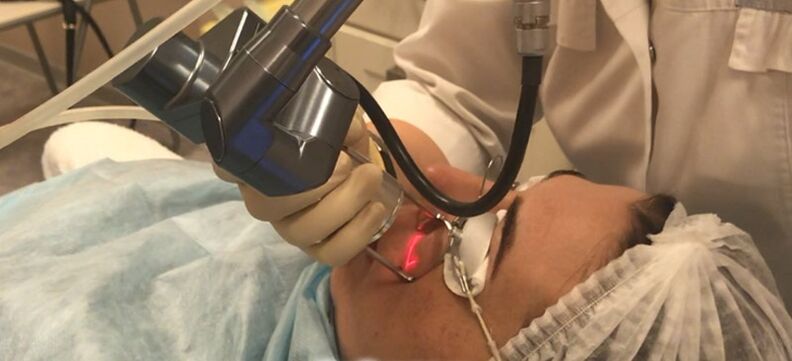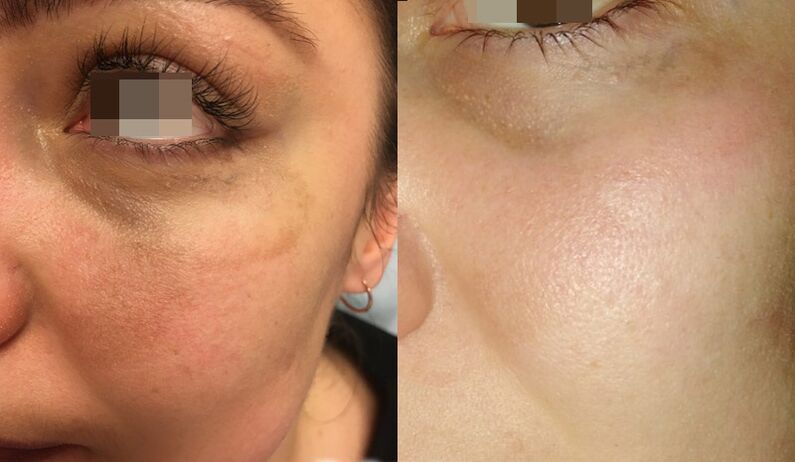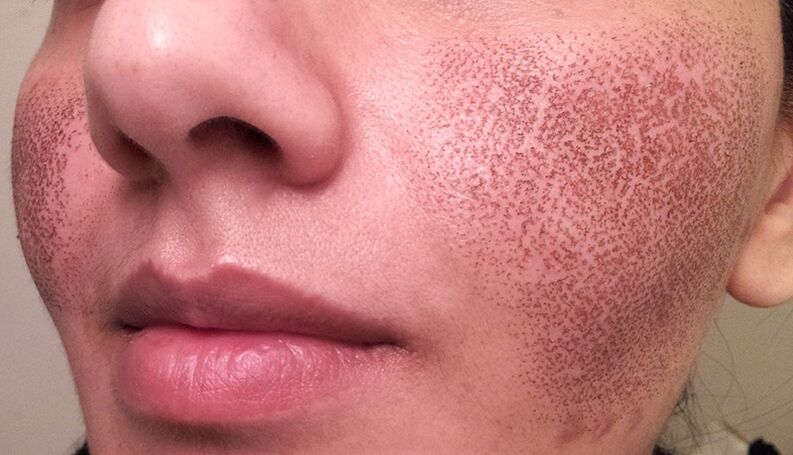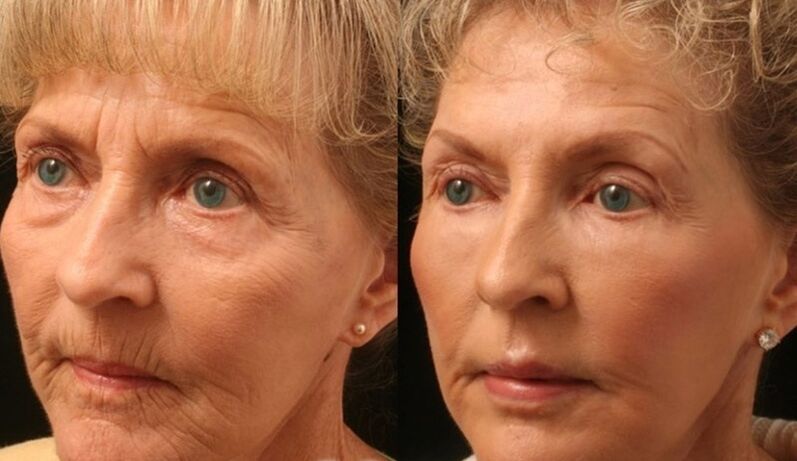
Who does not dream of young, beautiful and healthy skin? Unfortunately, its aging is an inevitable process. With age, elasticity is lost, pores dilate, wrinkles and age spots appear. How to deal with it and is it possible to do it without surgery?
One of the most effective options is fractional laser thermolysis. It is a non-surgical rejuvenating procedure that can solve many age-related and aesthetic problems, including smoothing wrinkles and correcting scars.
How does it work?
The photothermolysis procedure is based on the directed motion of a laser beam divided into several hundred best beams (called a fraction and hence the name). When they hit the target skin area, they cause a small temperature damage that is strictly controlled.
In response to these microtraumas, a natural recovery process begins. There is an increase in collagen production - a protein responsible for skin tone and elasticity. The damaged layer is completely renewed. The result is an obvious rejuvenating effect, mainly due to the activation of our body's natural internal resources.
Tips for fractional thermolysis
With this procedure you can:
- smooth fine wrinkles;
- improve skin tone, make it more elastic;
- Correct the relief: narrow the pores, remove acne scars (after acne), small stretch marks, scars and other scar defects after burns and cuts;
- relieving pigmentation, melasma (including age-related);
- Perform a full-fledged laser peeling - from the surface to the polish.
In general, fractional thermolysis is a universal technique, suitable for patients of all ages, and for those who want to achieve a rejuvenating effect, they are still not ready to go to a plastic surgeon. It is allowed to work on both the face and body, including the delicate area of the eyelids and the skin around the eyes - for example, the neck, décolleté or hands.

What devices are there
Photothermolysis is performed with various CO2 and erbium lasers, two of which require special attention:
- Fraxel - was a leader in its category for a long time, and the name faction became a household name for the rejuvenation procedure. Today it is considered obsolete, although it is very effective. There are several varieties designed to work with different skin types and different depths (re: store, re: fine, re: pair).
- Mixto is a new generation laser and today's "gold standard". It differs from Fraxel in wavelength and also uses a special trajectory of the rays. As a result, it surpasses its predecessor in all respects: the procedure is more comfortable and safe, fewer sessions are needed, and recovery is faster.
There are also many analog devices, mainly of Asian origin. It may be similar to Fraxel and Mixto in terms of operating principle, but they are always lower in terms of safety because they do not have such precise parameters for particle size, intensity and beam penetration depth.
How is the procedure
The session begins with a consultation with a cosmetologist, where the indicators and other nuances are clarified. No special training is required, so you can switch directly to laser:
- The first step is to clean the skin. An anesthetic (usually lidocaine-based gel) is applied to the target area.
- Patients and cosmetologists wear special glasses to protect their eyes from accidental laser shock.
- The doctor then adjusts the device - determines the depth of penetration, joule strength, pulse rate and other parameters. They are selected depending on the problem to be solved.
- After that, the cosmetologist slowly applies the manipulation to the desired area of the skin and gives it the same light parts. This can be quite annoying (depending on the individual's sensitivity to pain), but is generally tolerable - in most cases, patients describe their feelings as a slight tingling or burning sensation.
- The whole procedure, except preparation, takes about 20 minutes, the exact time depends on the size of the treated area. Soothing cream is applied to the face immediately after finishing. You can go home and return to normal work with minimal restrictions.
How long does rehabilitation take after fractional thermolysis and how is your skin cared for during this time?
Up to 24 hours after the session, redness and sometimes slight swelling remain on the face. It's like what happens when a person burns a little in the sun. Fear is a natural reaction to the activation of this rejuvenation mechanism.

The next day, the characteristic brown spots appear. On the third day, another indicator of the changes that have begun - micro erosion of the skin (peeling of old surface particles), but passes very quickly. In addition, tanning can continue for 1-2 weeks after the session, ie the effect of tanning.
There are few limitations after the procedure, but it is extremely important to observe them, otherwise there is a risk of complications, as well as not achieving the desired effect:
- For 2-3 weeks you can not sunbathe, including in the solarium, but also go to the bath / sauna (you can do on the eve of the session). At the same time, fractional thermolysis itself is carried out only in the absence of active sun.
- Moisturizing cosmetics (light cream that does not clog pores) should be applied to the treated area in the first weeks.
- It is important to protect the treated skin from strong mechanical stress. Any peeling and scrubbing, sour creams are prohibited until complete recovery. Under no circumstances should you peel off the scales, intensively scratch or rub the area where the laser thermolysis is performed.
The rejuvenating effect grows within a month and reaches its peak. In most cases, a course of 3-6 procedures is required to achieve a full-fledged result with a Fraxel laser. Mixto copes with small flaws in 1 session, with more serious - 2-3. The interval between them is several weeks so that the skin has time to fully heal.

In the end, there is no "limitation period", but it makes sense that over time, the condition of the skin will worsen under the influence of age and external factors.
Contraindications, complications and side effects
As with other apparatus correction methods, fractional thermolysis is not performed in the following cases:
- oncological diseases;
- epilepsy;
- inflammatory processes of the skin in the target area (neurodermatitis, psoriasis, atopic dermatitis);
- fresh herpetic eruptions;
- acute infectious diseases;
- final midline or deep chemical peeling, mechanical dermabrasion;
- pregnancy and lactation.
As for complications and side effects, the most common is increased pigmentation in the treated area. Fraxel, another laser of the previous generation with the wrong parameters, can cause very serious burns, even to deep scars. Mixto does not cause such problems.
However, the effectiveness and safety of the procedure still depends on the cosmetologist: the doctor must understand exactly what, why and how to do with such a powerful device. Therefore, the way to prevent complications and other undesirable consequences is very simple - just contact an experienced specialist who can work with modern lasers.
How much does fractional thermolysis cost?
The cost of the service depends on several factors: the brand of the device used for laser correction, the volume of the treated area, the duration of the course and the qualifications of the specialist. Ask your cosmetologist for the full amount.
























